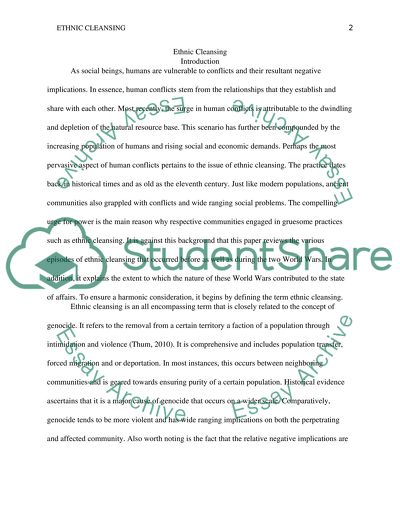Cite this document
(“Ethnic Cleansing History Essay Example | Topics and Well Written Essays - 1250 words”, n.d.)
Retrieved from https://studentshare.org/history/1447598-2-ethnic-cleansing-has-been-the-most-gruesome-feature-of-wwi-and-wwii-what-is-ethnic-cleansing-what-were-the-various-episodes
Retrieved from https://studentshare.org/history/1447598-2-ethnic-cleansing-has-been-the-most-gruesome-feature-of-wwi-and-wwii-what-is-ethnic-cleansing-what-were-the-various-episodes
(Ethnic Cleansing History Essay Example | Topics and Well Written Essays - 1250 Words)
https://studentshare.org/history/1447598-2-ethnic-cleansing-has-been-the-most-gruesome-feature-of-wwi-and-wwii-what-is-ethnic-cleansing-what-were-the-various-episodes.
https://studentshare.org/history/1447598-2-ethnic-cleansing-has-been-the-most-gruesome-feature-of-wwi-and-wwii-what-is-ethnic-cleansing-what-were-the-various-episodes.
“Ethnic Cleansing History Essay Example | Topics and Well Written Essays - 1250 Words”, n.d. https://studentshare.org/history/1447598-2-ethnic-cleansing-has-been-the-most-gruesome-feature-of-wwi-and-wwii-what-is-ethnic-cleansing-what-were-the-various-episodes.


